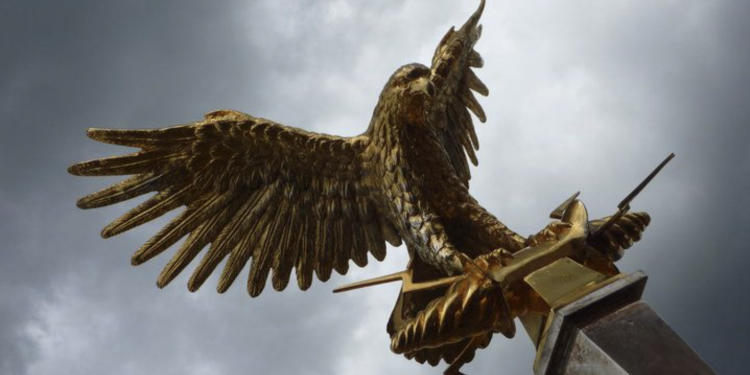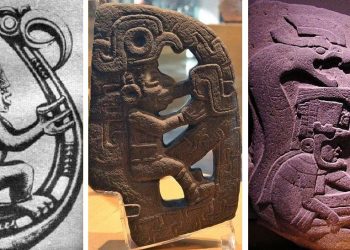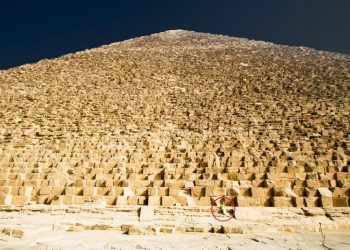7 Facts About the Aquila
The aquila, or eagle, has long been a symbol of power, courage, and nobility. For ancient Rome, this regal bird held a special significance as the emblem of their mighty legions. Delve into the fascinating history of the aquila and discover how it played a pivotal role in the rise of the Roman Empire.
A Symbol of Roman Dominance and Unity
The aquila served as a unifying symbol for the Roman legions, representing their strength and determination. When a legionary known as the aquilifer carried the standard adorned with the eagle, it was a reminder to the soldiers of their loyalty to Rome and their duty to protect the empire.
A Sacred Duty: The Aquilifer’s Role
Tasked with the sacred responsibility of bearing the aquila, the aquilifer held a prestigious position within the legion. Chosen for their bravery and skill, these soldiers were granted special privileges, such as a higher salary and a prominent place in the battle formation. However, the honor came with great responsibility; should the aquila be lost, the aquilifer would be severely punished and humiliated.
A Legion’s Pride: The Impact of Losing the Aquila
Losing the aquila in battle was a crushing blow to a legion’s morale and a sign of great disgrace. It signified the failure of the legion to protect their symbol and, by extension, Rome itself. In some cases, the loss of the aquila led to the disbandment of the entire legion. The Roman military went to great lengths to recover their lost standards, with generals like Julius Caesar and Augustus leading campaigns to regain them.
More Than Just an Eagle: The Aquila’s Design
The aquila was typically made of gold or silver (although there is evidence some were made of bronze) and depicted an eagle with outstretched wings, perched atop a pole. Sometimes, the eagle clutched a thunderbolt or a laurel wreath in its talons, symbolizing the power of the gods or the victory of Rome.
The pole was often adorned with other decorative elements such as a crossbar with the legion’s number and name inscribed, as well as phalerae (medallions) awarded for acts of valor.
The Aquila’s Evolution: From Eagle to Standard
Before the adoption of the aquila as the sole standard of the Roman legions, each legion had its own symbol, including the wolf, boar, horse, etc. In 104 BCE, the Roman consul Gaius Marius decided to replace these individual standards with the eagle, creating a more cohesive and unified military force. This shift marked the beginning of the aquila’s prominence in Roman military history.
A Rallying Point: The Aquila’s Role in Battle
During battles, the aquila played a crucial role as a rallying point for the soldiers. Visible from a distance, the eagle’s presence on the battlefield helped maintain order and boost morale among the troops. The aquilifer would stand near the front lines, ensuring that the soldiers could see the symbol and draw inspiration from it.
In the heat of battle, the sight of the aquila reminded the legionaries of their duty to Rome and their comrades, often motivating them to fight with even greater ferocity.
The Aquila’s Legacy: A Lasting Symbol of Rome
Though the Roman Empire eventually fell, the legacy of the aquila endures. The symbol of the eagle has been adopted by various nations and organizations throughout history, often representing strength, power, and unity. From the Byzantine Empire to Napoleon’s French Empire and the modern United States, the influence of the aquila can be seen in heraldry and national symbols worldwide.
A Testament to Rome’s Enduring Influence
The aquila’s importance in ancient Rome stands as a powerful reminder of the empire’s lasting impact on the course of history, the development of various cultures, and the evolution of military strategies. Born from the desire for unity and cohesion among the Roman legions, the aquila transformed into a symbol that embodied the core values of the Roman military—power, courage, and unity.
The aquila’s role as a unifying emblem contributed to the formation of a strong, united Roman military force that ultimately shaped the world as we know it. This sense of unity fostered a collective identity among the soldiers, allowing them to overcome adversities and conquer vast territories.
As a result, the Roman Empire’s influence spread far and wide, leaving its indelible mark on numerous cultures, languages, legal systems, and architectural styles.
PLEASE READ: Have something to add? Visit Curiosmos on Facebook. Join the discussion in our mobile Telegram group. Also, follow us on Google News. Interesting in history, mysteries, and more? Visit Ancient Library’s Telegram group and become part of an exclusive group.











